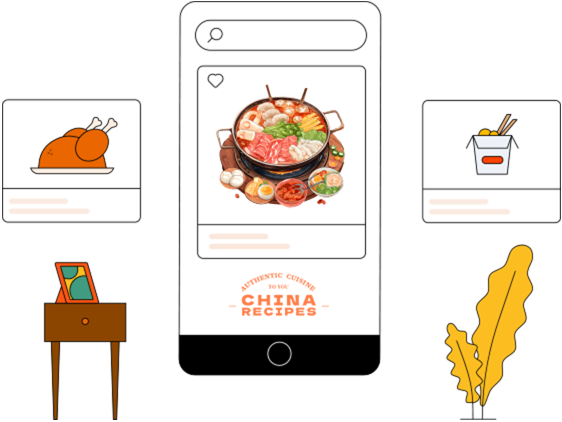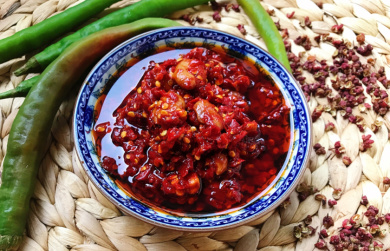What's a skimmer? Here’s what a skimmer for cooking is
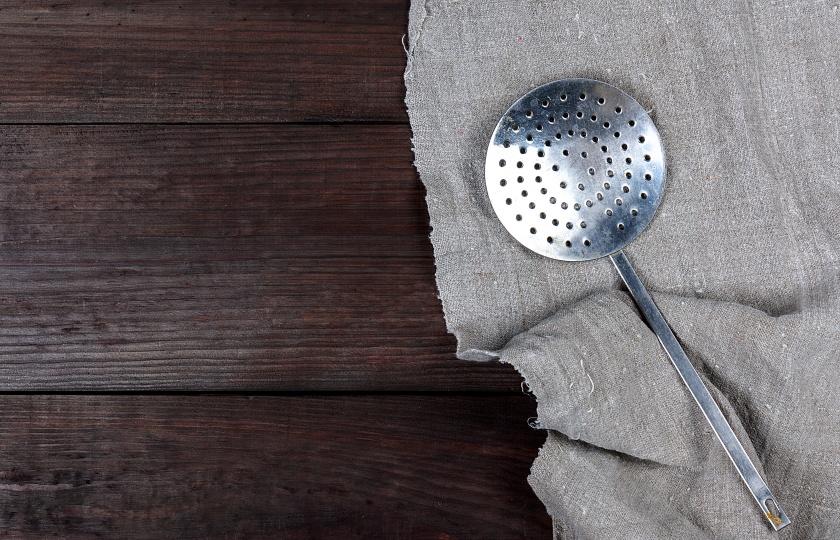
A skimmer is an indispensable tool in the kitchen that can help remove impurities, but many people don’t know what a cooking skimmer is? Let me introduce it to you in detail today!
Whats a skimmer for cooking?
A skimmer is a kitchen tool used to separate oil residue during cooking. It is usually made of stainless steel and is heat-resistant and easy to clean.
Its main function is to remove impurities and foam from the oil during cooking to keep the oil clear and the food pure.
It has a long handle and a mesh with many small holes, which can easily pick up impurities in the oil while cooking without letting the oil leak.
This kind of tool is particularly useful when frying food, which can effectively remove foam and impurities in the oil and extend the service life of the oil.
What is the skimmer used for?
The skimmer plays the following roles in the cooking process:
Remove foam and impurities
When stewing soup or cooking meat, some impurities and foam often float on the surface of the liquid, which greatly affects the clarity of the soup. The skimmer can easily remove these impurities, making the soup clearer and more delicate in taste.
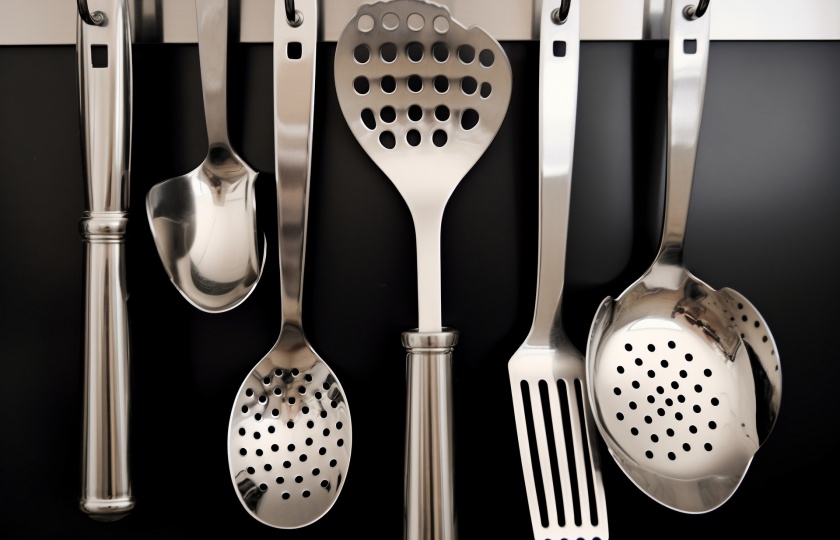
Separation of grease
When cooking greasy dishes, a skimmer can help remove excess grease from the surface, making the dishes more refreshing and suitable for healthy eating.
Improve the appearance of dishes
After using the skimmer, the soup or sauce will be clearer and more transparent, and look more tempting. It is very practical for those who pursue the perfect appearance of dishes.
Multifunctional use
The skimmer can be used to skim or as a colander, for example, to drain cooked pasta, filter vegetables, etc. It is a multi-purpose tool and very convenient.
What is the difference between a skimmer and a slotted spoon?
A skimmer and a colander may look alike, but they are actually very different:
Shape Design
Skimmer spoon: The skimmer spoon is in the shape of a spoon, with a relatively shallow body and usually a long handle for easy hand-held operation. The edge of the spoon mouth is relatively smooth. Some skimmer spoons have some small arcs or angles at the spoon mouth, which can better skim off the floating foam on the surface of the soup.
Colander: It has a deeper spoon-shaped or mesh structure used to hold and filter food. The spoon body or net bag is usually much deeper than a skimmer and has a large number of evenly distributed small holes so that the liquid can quickly flow out through the small holes, while the food remains in the spoon. The handle of the colander can be long or short, but long handles are generally the most common.
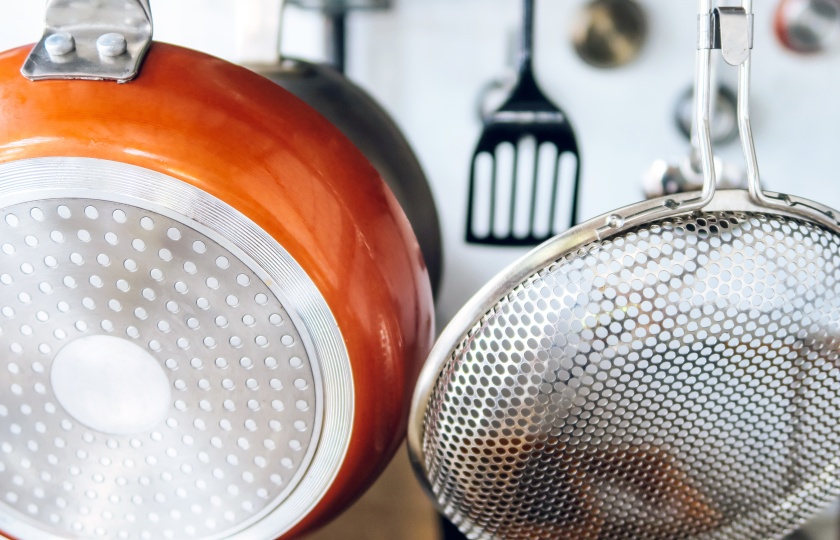
Functional purpose
Skimmer: Used to skim off foam, grease or impurities on the surface of liquids such as soup and porridge during the cooking process to purify the soup.
Colander: Its main function is to filter and drain. For example, after cooking noodles or dumplings, you can use a colander to take the noodles or dumplings out of the pot. It can also be used to filter soy milk, squeeze juice, etc. to separate liquid and residue.
Material characteristics
Skimmer: There are many materials, the most common ones are stainless steel, ceramic, wood, etc. Stainless steel skimmers are durable, not easy to rust, and easy to clean; ceramic skimmers are beautiful and not easy to react chemically with food, and are relatively fragile; wooden skimmers are more natural and will not scratch the pot, but they need to be maintained to prevent mold.
Colander: Mostly made of stainless steel, but also plastic or silicone. Stainless steel colanders are strong and corrosion-resistant; plastic colanders are light, cheap, poorly conductive, and not very resistant to high temperatures; silicone colanders are softer, more flexible, less prone to damage, and can be folded for easy storage.
Usage scenarios
Skimmer: Suitable for removing foam and grease when stewing soup, cooking stock or making sauce, making the liquid clearer.
Colander: Suitable for various scenarios where food needs to be scooped out, such as cooking noodles, dumplings, frying food or filtering soy milk.
What size skimmer do i need?
Normally, the size of a skimmer ranges from 12-58cm. If you use it to stew soup or cook a small amount of food, then a small skimmer of 12-15cm will be enough. This size of skimmer is light and flexible, suitable for small pots, and the price is also more affordable.
But if you often need to process a lot of food, such as cooking a large pot of soup or deep frying, then a medium size of 20-30cm will be more suitable. This size skimmer has a larger capacity and can remove foam and impurities more efficiently.
For commercial kitchens or scenarios where large amounts of liquid need to be processed frequently, a large skimmer over 30 cm can be selected.
Why do people skim soup?
1. Improve taste
The foam may not seem like a big deal, but it actually affects the taste of the soup. It makes the soup cloudy, tastes like impurities, and may even have a fishy smell. After skimming off the foam, the soup will be clearer, more delicate, and have a smoother taste.
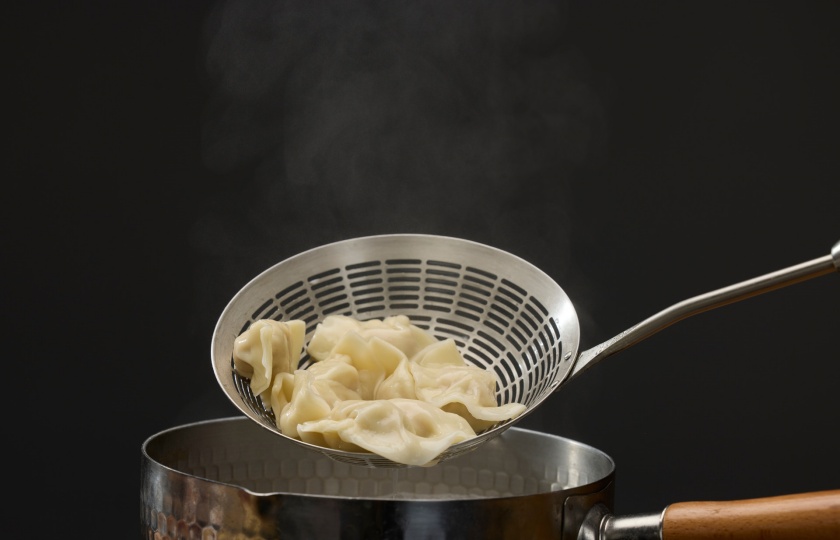
2. Improve appearance
Skimming off the foam can make the soup look clearer and more transparent, and the color is more attractive. Whether it is clear soup, stock or thick soup, soup without foam always looks more delicate and makes people more appetizing. This is very important for those who pursue perfect dishes.
3. Reduce odor
The foam contains some meat blood and impurities, which may have some unpleasant odors. By skimming off the foam, you can effectively reduce these odors and make the soup taste purer.
4. Improve nutrition
The foam itself does not have much impact on nutrition, but skimming off impurities can make the soup more refreshing and avoid excessive intake of fat and impurities. This is a small plus for friends who pursue a healthy diet.
5. Traditional cooking habits
In traditional Chinese cooking, skimming off the foam is a common operation. It is not only for taste and appearance, but also a respect for food and pursuit of details. For example, when stewing chicken soup or boiling broth, skimming off the foam is an essential step.
How do you skim soup without a skimmer?
If you don't have a skimmer at home, you can use the following tools instead:
Ordinary soup spoon
If you don't have a skimmer, the easiest substitute is an ordinary soup spoon. You can use the spoon to gently scrape the surface of the soup, collect the foam on the spoon, and then pour it out.
Although this method is more laborious, as long as you are patient, it can also effectively remove the foam.
Screen
If you have a fine mesh sieve, you can also use it to skim the foam. Gently place the sieve on the soup surface to filter out the foam, then gently lift the sieve and pour out the foam.
The effect of this method is similar to that of a skimmer, especially when the holes in the sieve are fine, it can filter out fine impurities very well.
Kitchen paper towel or gauze
If you don't have the right tools, kitchen paper towels or gauze can also come in handy. You can fold the kitchen paper towels or gauze into a thicker block and gently place it on the soup surface to let the foam absorb on the paper towels or gauze.
Although this method is a bit "rustic", the effect is surprisingly good, especially for some more delicate foam.





